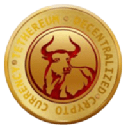-
 Bitcoin
Bitcoin $95,277.5322
-0.51% -
 Ethereum
Ethereum $2,689.5456
0.12% -
 XRP
XRP $2.5305
-3.36% -
 Tether USDt
Tether USDt $0.9996
-0.05% -
 BNB
BNB $652.5157
-0.92% -
 Solana
Solana $166.4991
-4.15% -
 USDC
USDC $1.0000
-0.03% -
 Dogecoin
Dogecoin $0.2510
-1.06% -
 Cardano
Cardano $0.7405
-6.55% -
 TRON
TRON $0.2424
1.35% -
 Chainlink
Chainlink $17.5790
-5.13% -
 Stellar
Stellar $0.3258
-1.13% -
 Litecoin
Litecoin $131.0836
6.27% -
 Avalanche
Avalanche $23.2609
-4.13% -
 Sui
Sui $3.0446
-2.47% -
 Toncoin
Toncoin $3.6418
-1.20% -
 UNUS SED LEO
UNUS SED LEO $9.8102
0.23% -
 Shiba Inu
Shiba Inu $0.0...01518
-1.13% -
 Hedera
Hedera $0.2059
-1.48% -
 Hyperliquid
Hyperliquid $23.0206
-8.98% -
 MANTRA
MANTRA $7.6222
5.07% -
 Polkadot
Polkadot $4.7343
-1.76% -
 Bitcoin Cash
Bitcoin Cash $314.0273
-1.88% -
 Ethena USDe
Ethena USDe $0.9989
-0.03% -
 Bitget Token
Bitget Token $4.8228
-4.58% -
 Uniswap
Uniswap $9.4824
-1.95% -
 Dai
Dai $1.0000
-0.02% -
 Monero
Monero $234.7212
-0.18% -
 Pepe
Pepe $0.0...09226
-3.84% -
 Aave
Aave $250.2221
-1.54%
What are On-Chain Governance Tools?
On-chain governance tools provide cryptocurrency projects with decentralized and transparent mechanisms for community involvement in decision-making, empowering token holders to directly influence key aspects of project development.
Feb 16, 2025 at 07:36 pm

Key Points:
- Definition and Purpose of On-Chain Governance Tools
- Advantages and Limitations of On-Chain Governance
- Steps to Implement On-Chain Governance
- Detailed Overview of On-Chain Governance Protocols
- Case Study: Aragon and DAOs
- FAQs Related to On-Chain Governance
What Are On-Chain Governance Tools?
On-chain governance tools provide decentralized and transparent mechanisms for cryptocurrency projects to involve their community in decision-making processes. By leveraging blockchain technology, these tools enable token holders to directly vote and influence key aspects of project development, such as protocol upgrades, treasury management, and strategic partnerships.
Advantages and Limitations of On-Chain Governance
Advantages:
- Transparency and Auditability: On-chain governance transactions are recorded on the blockchain, providing a verifiable and immutable record of all decisions.
- Decentralization: Allows for broad participation from community members, removing the need for intermediaries or centralized control.
- Community Empowerment: Gives token holders a direct voice in shaping the future of the project, fostering ownership and engagement.
Limitations:
- Technical Barriers:Implementing and operating on-chain governance systems can require technical expertise and resources.
- Voter Apathy: As participation increases, it can become challenging to maintain high voter engagement and ensure informed decision-making.
- Security Risks: Voting mechanisms should be designed to mitigate potential vulnerabilities, such as vote manipulation and Sybil attacks.
Steps to Implement On-Chain Governance
- Define Governance Framework: Establish a clear structure outlining the roles, responsibilities, and decision-making processes.
- Choose a Protocol: Select an on-chain governance protocol that aligns with the project's technical and organizational needs.
- Implement Voting Mechanisms: Develop voting mechanisms that facilitate fair and transparent decision-making, considering factors such as quorum, voting thresholds, and dispute resolution.
- Educate the Community: Ensure that community members have clear understanding of the governance process and their responsibilities as token holders.
- Monitor and Iterate: Continuously monitor the effectiveness of the governance system and make adjustments based on community feedback and evolving needs.
Detailed Overview of On-Chain Governance Protocols
- Aragon: A comprehensive suite of tools for creating and managing decentralized autonomous organizations (DAOs). Aragon provides various voting mechanisms, role management, and treasury management tools.
- Snapshot: A tool that allows token holders to participate in off-chain voting using a snapshot of the blockchain at a specific point in time. Snapshot is often used for informal polls and community sentiment analysis.
- GnosisDAO: A protocol that combines a voting system with a prediction market, allowing token holders to express their opinions on future events and potentially influence decision-making through market incentives.
- DAOstack: A platform that provides a range of modular tools for building and governing DAOs. DAOstack enables customizable voting mechanisms, treasury management, and community engagement features.
Case Study: Aragon and DAOs
Aragon is a popular framework for creating and governing DAOs on the Ethereum blockchain. DAOs are autonomous organizations that are governed by smart contracts and controlled by their token holders.
Here's how Aragon's on-chain governance tools enable DAOs to function:
- Voting: Aragon's voting mechanism allows token holders to vote on proposals that impact the DAO's operations, such as changes to the governance framework, treasury management, and technical upgrades.
- Role Management: Aragon enables the creation and assignment of roles with specific permissions within the DAO. For example, roles can be created for administrators, treasurers, and project contributors.
- Treasury Management: Aragon provides tools for managing the DAO's treasury, including setting up a budget, tracking expenses, and approving transactions.
- Dispute Resolution: Aragon has built-in mechanisms for resolving disputes within the DAO, allowing token holders to challenge and appeal decisions through a fair and decentralized process.
FAQs Related to On-Chain Governance
Q: How does on-chain governance protect against malicious actors or centralization?
A: On-chain governance protocols implement security measures such as multi-sig wallets and threshold voting, requiring a certain percentage of token holders to approve decisions, mitigating the influence of individuals or groups.
Q: What happens if there is a dispute over a voting outcome?
A: Many on-chain governance protocols have integrated dispute resolution mechanisms, allowing community members to challenge and appeal decisions through a fair and impartial process, often involving arbitration or community-driven voting.
Q: How can DAOs ensure continuous engagement and participation in governance?
A: DAOs can implement incentives for voting and contributions, such as rewards for participation or reputation systems that recognize active members. They can also hold regular online meetings and discussions to facilitate ongoing engagement and community building.
Disclaimer:info@kdj.com
The information provided is not trading advice. kdj.com does not assume any responsibility for any investments made based on the information provided in this article. Cryptocurrencies are highly volatile and it is highly recommended that you invest with caution after thorough research!
If you believe that the content used on this website infringes your copyright, please contact us immediately (info@kdj.com) and we will delete it promptly.
- The Royal Mint has revealed the top 10 rarest 50p coins currently in circulation and all of them are up for grabs in Norfolk
- 2025-02-19 12:41:32
- The 3 Most Bullish Crypto ICOs to Watch in 2025
- 2025-02-19 12:36:40
- OpenSea Announces SEA Token Launch, Signaling an Ambitious Transformation for the NFT Market
- 2025-02-19 12:15:20
- Compositions in Code: The Art of Processing and p5.js
- 2025-02-19 12:01:39
- Grayscale Launches Pyth Trust to Track the PYTH Token of the Solana (SOL) Ecosystem
- 2025-02-19 12:01:39
- Meme Coins & ICOs: Born from Market Flaws?
- 2025-02-19 12:01:39
Related knowledge

What is Off-Chain Governance Scalability?
Feb 15,2025 at 06:42pm
Key PointsOff-chain governance is a process by which decisions are made and implemented outside of the blockchain network.Scalability refers to the ability of a system to handle an increasing number of transactions without compromising performance.Off-chain governance scalability offers a solution to the scaling challenges faced by blockchain networks b...

What is On-Chain Governance Scalability?
Feb 15,2025 at 07:54pm
Key Points:Definition and Importance of On-Chain Governance ScalabilityBenefits of Scalable On-Chain GovernanceChallenges and Trade-offs in Achieving ScalabilityCurrent Solutions to Improve On-Chain Governance ScalabilityFuture Developments and InnovationsWhat is On-Chain Governance Scalability?On-chain governance refers to the process of making decisio...

What is Off-Chain Governance Security?
Feb 15,2025 at 02:18pm
Key Points:Off-chain governance leverages external mechanisms to facilitate decision-making and consensus among blockchain participants.Security measures mitigate risks associated with off-chain governance, such as centralization, collusion, and malicious manipulation.Multi-signature wallets, decentralized autonomous organizations (DAOs), and dispute re...

What is On-Chain Governance Security?
Feb 16,2025 at 04:07pm
Key PointsOn-chain governance security refers to the mechanisms and processes in place on a blockchain to ensure the integrity and security of governance decisions.Primary methods of on-chain governance include voting, staking, and delegation.Key benefits of on-chain governance include transparency, immutability, and decentralization.Challenges associat...

What is Off-Chain Governance Transparency?
Feb 16,2025 at 09:24pm
Key Points:Off-chain governance transparency refers to the availability and accessibility of information about decision-making processes and outcomes outside of a blockchain's main network.Off-chain governance systems can be employed for various purposes, such as community engagement, proposal evaluation, and voting on protocol upgrades.Establishing cle...

What is On-Chain Governance Transparency?
Feb 18,2025 at 06:36am
Key Points:On-chain governance transparency refers to the ability of stakeholders to access and interact with the blockchain data that underpins a protocol's governance system.Transparent governance ensures accountability, reduces risks of centralization, and fosters community engagement.It enables stakeholders to verify voting records, track proposals,...

What is Off-Chain Governance Scalability?
Feb 15,2025 at 06:42pm
Key PointsOff-chain governance is a process by which decisions are made and implemented outside of the blockchain network.Scalability refers to the ability of a system to handle an increasing number of transactions without compromising performance.Off-chain governance scalability offers a solution to the scaling challenges faced by blockchain networks b...

What is On-Chain Governance Scalability?
Feb 15,2025 at 07:54pm
Key Points:Definition and Importance of On-Chain Governance ScalabilityBenefits of Scalable On-Chain GovernanceChallenges and Trade-offs in Achieving ScalabilityCurrent Solutions to Improve On-Chain Governance ScalabilityFuture Developments and InnovationsWhat is On-Chain Governance Scalability?On-chain governance refers to the process of making decisio...

What is Off-Chain Governance Security?
Feb 15,2025 at 02:18pm
Key Points:Off-chain governance leverages external mechanisms to facilitate decision-making and consensus among blockchain participants.Security measures mitigate risks associated with off-chain governance, such as centralization, collusion, and malicious manipulation.Multi-signature wallets, decentralized autonomous organizations (DAOs), and dispute re...

What is On-Chain Governance Security?
Feb 16,2025 at 04:07pm
Key PointsOn-chain governance security refers to the mechanisms and processes in place on a blockchain to ensure the integrity and security of governance decisions.Primary methods of on-chain governance include voting, staking, and delegation.Key benefits of on-chain governance include transparency, immutability, and decentralization.Challenges associat...

What is Off-Chain Governance Transparency?
Feb 16,2025 at 09:24pm
Key Points:Off-chain governance transparency refers to the availability and accessibility of information about decision-making processes and outcomes outside of a blockchain's main network.Off-chain governance systems can be employed for various purposes, such as community engagement, proposal evaluation, and voting on protocol upgrades.Establishing cle...

What is On-Chain Governance Transparency?
Feb 18,2025 at 06:36am
Key Points:On-chain governance transparency refers to the ability of stakeholders to access and interact with the blockchain data that underpins a protocol's governance system.Transparent governance ensures accountability, reduces risks of centralization, and fosters community engagement.It enables stakeholders to verify voting records, track proposals,...
See all articles
























































































